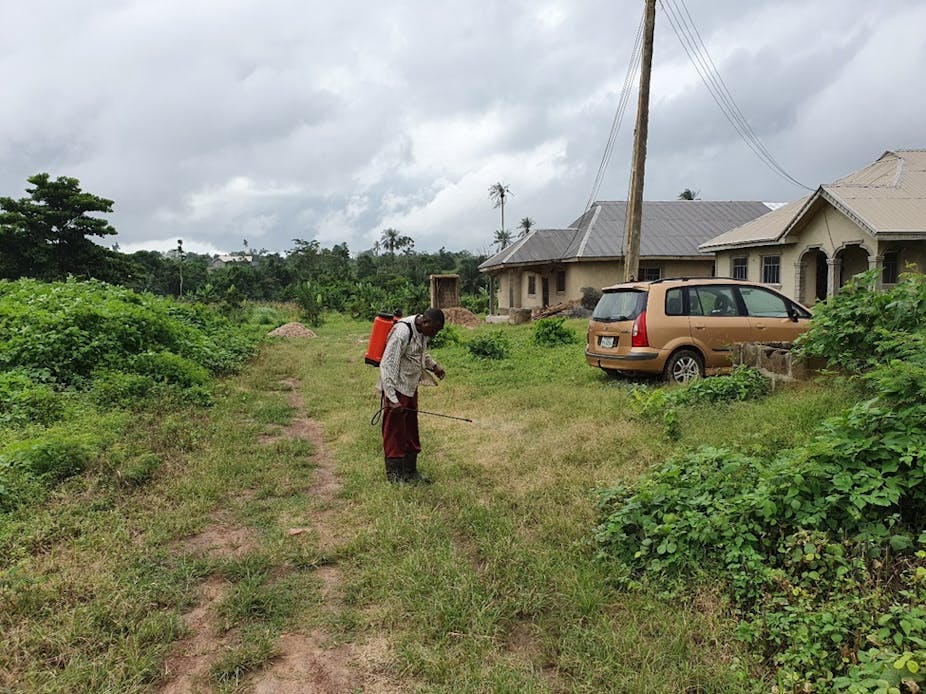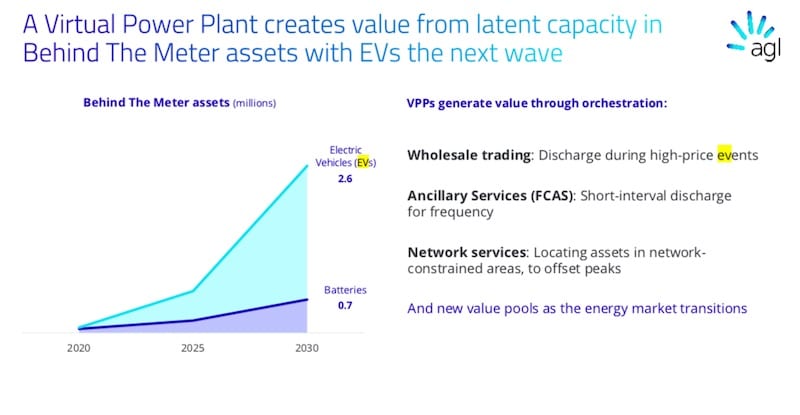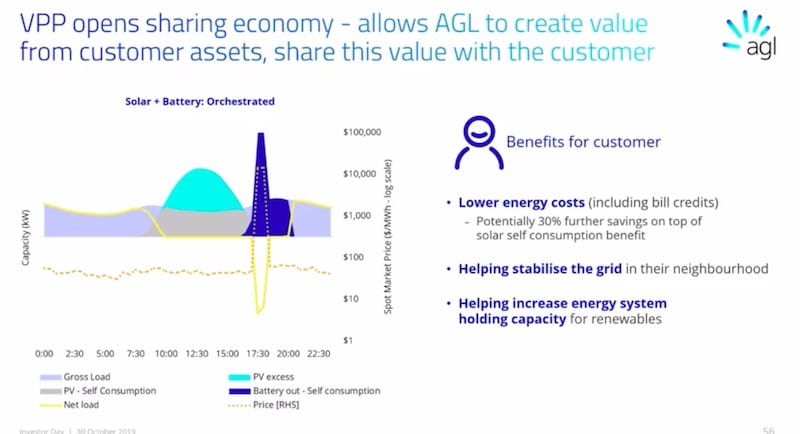IDA is a vital development partner now more than ever
This page in:
Image

It
is undeniable that progress has been made in reducing extreme poverty
over the last quarter century—from 36 percent of the world population in
1990 to an estimated 8.6 percent in 2018—and that living standards for
hundreds of millions of people have improved over that time.
Yet, poverty reduction has not been consistent across countries and today it is slowing.
Many countries lag in their progress towards other development targets: two out of five people lack access to electricity; one out of three lacks clean drinking water; and one in five people remains malnourished. While countries have made progress, it is clear that stark challenges remain.
For nearly 60 years, the International Development Association (IDA)—the concessional lending arm of the World Bank Group—has not shied away from these challenges. At a time when debt vulnerabilities are rising for many countries, IDA funds support the critical investments that can broaden economic growth and help countries overcome the unique problems they face.
With IDA’s support, countries have made progress in even the toughest environments. In the Democratic Republic of Congo, IDA has contributed to economic recovery by connecting farmers to markets with rural roads in 715 villages, and by creating 50,000 jobs in civil works with a focus on youth and women.
In Afghanistan, IDA-supported projects have generated 5,500 kilowatts of power, built 850 kilometers of roads, and provided 63 million liters of drinking water per day, benefiting 4.5 million people. And in Haiti, IDA’s support has helped immunize 640,000 children and ensured skilled birth attendants at 20,000 births.
But IDA’s value extends beyond financing. In fragile and conflict situations, IDA is using its growing knowledge base to better address the risks and drivers of fragility.
IDA has scaled up its support for regional solutions, helping countries add to ongoing integration efforts and partnering on new global and inter-regional initiatives. In the Sahel, as the largest donor to the region, the World Bank is well placed to convene clients and partners to identify solutions to a range of development challenges, especially those related to the regional dimensions of fragility. On track to double the three-year commitments of $2.5 billion under its previous replenishment period, IDA plans to scale up support to the Sahel further, with financing expected to increase to $6.5 billion, subject to country performance.
During the current three-year IDA cycle, commitments to eligible countries have surpassed $1.7 billion, already exceeding the $1.2 billion total during the previous cycle. This scale-up has been pivotal in responding to natural disasters and strengthening resilience. For example, the Pacific Climate-Resilience Project is helping build more resilient transport infrastructure in Samoa, Tonga, Tuvalu, and Vanuatu.
IDA has a unique ability to play a credible leadership role in pursuit of global agendas as diverse as marine litter, crisis preparedness and response, debt sustainability, gender equality, and climate change.
On climate change, IDA is helping countries implement their climate targets. Over IDA18’s first two years, IDA has strengthened support for countries in adapting to the effects of climate change ($7.8 billion total) and improving mitigation efforts ($5.9 billion total). In addition, all IDA operations are screened for short- and long-term climate change and disaster risks.
IDA is also leveraging the strengths of the entire World Bank Group—including the International Finance Corporation and Multilateral Investment Guarantee Agency—to ensure that resources, expertise, and solutions are maximized in the most challenging places. Two years ago, IDA’s shareholders broke new ground with the launch of the IDA Private Sector Window, a $2.5 billion facility aimed to help offset risks and other impediments to private sector investment in the world’s most challenging markets, including those with weak government capacity, inadequate legal frameworks, a lack of capital markets, and limited infrastructure.
Perhaps as important as these innovations is IDA’s results-oriented, country-led model that puts countries in the driver’s seat of their own development. IDA responds rapidly and flexibly and ensures that the resources it allocates to countries address their most pressing concerns and needs while building the appropriate institutions and systems.
This also enables IDA to build strong and effective partnerships with other bilateral and multilateral agencies and national institutions, the United Nations, the private sector, and civil society.
As IDA moves toward concluding its 19th replenishment (IDA19) together with its partners in December this year, we have heard loud and clear that IDA must continue to respond with urgency to today’s greatest development challenges.
With our partners, IDA has developed a very strong policy package for IDA19 that will invest in the growth, people, and resilience of the countries most in need. It sets IDA on a more ambitious path, squarely focused on results and impact, and increased demand from IDA borrowers.
A strong IDA19 replenishment will enable us to better support countries in these challenging times. We are grateful for the support from our large community of donors, who recognize the value of IDA’s partnership and who help make development progress possible.
During the World Bank Group’s 2019 Annual Meetings, IDA champions from China, France, the Netherlands, Saudi Arabia, Sweden, and the United Kingdom called for a strong IDA19 replenishment. And statements of support for IDA19 from governments across Africa, the Middle East, South and Southeast Asia, and the Pacific reinforce our belief that a fully resourced IDA can and should do more.
We call on IDA’s donors to join us and ensure that we achieve a strong IDA19 replenishment that meets the ambitions we all share. Together, we can continue to reduce poverty, raise prosperity, and achieve our shared goals for the people most in need.
Yet, poverty reduction has not been consistent across countries and today it is slowing.
Many countries lag in their progress towards other development targets: two out of five people lack access to electricity; one out of three lacks clean drinking water; and one in five people remains malnourished. While countries have made progress, it is clear that stark challenges remain.
For nearly 60 years, the International Development Association (IDA)—the concessional lending arm of the World Bank Group—has not shied away from these challenges. At a time when debt vulnerabilities are rising for many countries, IDA funds support the critical investments that can broaden economic growth and help countries overcome the unique problems they face.
With IDA’s support, countries have made progress in even the toughest environments. In the Democratic Republic of Congo, IDA has contributed to economic recovery by connecting farmers to markets with rural roads in 715 villages, and by creating 50,000 jobs in civil works with a focus on youth and women.
In Afghanistan, IDA-supported projects have generated 5,500 kilowatts of power, built 850 kilometers of roads, and provided 63 million liters of drinking water per day, benefiting 4.5 million people. And in Haiti, IDA’s support has helped immunize 640,000 children and ensured skilled birth attendants at 20,000 births.
But IDA’s value extends beyond financing. In fragile and conflict situations, IDA is using its growing knowledge base to better address the risks and drivers of fragility.
IDA has scaled up its support for regional solutions, helping countries add to ongoing integration efforts and partnering on new global and inter-regional initiatives. In the Sahel, as the largest donor to the region, the World Bank is well placed to convene clients and partners to identify solutions to a range of development challenges, especially those related to the regional dimensions of fragility. On track to double the three-year commitments of $2.5 billion under its previous replenishment period, IDA plans to scale up support to the Sahel further, with financing expected to increase to $6.5 billion, subject to country performance.
During the current three-year IDA cycle, commitments to eligible countries have surpassed $1.7 billion, already exceeding the $1.2 billion total during the previous cycle. This scale-up has been pivotal in responding to natural disasters and strengthening resilience. For example, the Pacific Climate-Resilience Project is helping build more resilient transport infrastructure in Samoa, Tonga, Tuvalu, and Vanuatu.
IDA has a unique ability to play a credible leadership role in pursuit of global agendas as diverse as marine litter, crisis preparedness and response, debt sustainability, gender equality, and climate change.
On climate change, IDA is helping countries implement their climate targets. Over IDA18’s first two years, IDA has strengthened support for countries in adapting to the effects of climate change ($7.8 billion total) and improving mitigation efforts ($5.9 billion total). In addition, all IDA operations are screened for short- and long-term climate change and disaster risks.
IDA is also leveraging the strengths of the entire World Bank Group—including the International Finance Corporation and Multilateral Investment Guarantee Agency—to ensure that resources, expertise, and solutions are maximized in the most challenging places. Two years ago, IDA’s shareholders broke new ground with the launch of the IDA Private Sector Window, a $2.5 billion facility aimed to help offset risks and other impediments to private sector investment in the world’s most challenging markets, including those with weak government capacity, inadequate legal frameworks, a lack of capital markets, and limited infrastructure.
Perhaps as important as these innovations is IDA’s results-oriented, country-led model that puts countries in the driver’s seat of their own development. IDA responds rapidly and flexibly and ensures that the resources it allocates to countries address their most pressing concerns and needs while building the appropriate institutions and systems.
This also enables IDA to build strong and effective partnerships with other bilateral and multilateral agencies and national institutions, the United Nations, the private sector, and civil society.
As IDA moves toward concluding its 19th replenishment (IDA19) together with its partners in December this year, we have heard loud and clear that IDA must continue to respond with urgency to today’s greatest development challenges.
With our partners, IDA has developed a very strong policy package for IDA19 that will invest in the growth, people, and resilience of the countries most in need. It sets IDA on a more ambitious path, squarely focused on results and impact, and increased demand from IDA borrowers.
A strong IDA19 replenishment will enable us to better support countries in these challenging times. We are grateful for the support from our large community of donors, who recognize the value of IDA’s partnership and who help make development progress possible.
During the World Bank Group’s 2019 Annual Meetings, IDA champions from China, France, the Netherlands, Saudi Arabia, Sweden, and the United Kingdom called for a strong IDA19 replenishment. And statements of support for IDA19 from governments across Africa, the Middle East, South and Southeast Asia, and the Pacific reinforce our belief that a fully resourced IDA can and should do more.
We call on IDA’s donors to join us and ensure that we achieve a strong IDA19 replenishment that meets the ambitions we all share. Together, we can continue to reduce poverty, raise prosperity, and achieve our shared goals for the people most in need.
Philippe
Le Houérou is Chief Executive Officer of the International Finance
Corporation. Antoinette Sayeh is a Distinguished Visiting Fellow at the
Center for Global Development. They serve as the Co-Chairs for the
negotiations of the 19th Replenishment of the International Development
Association, which is scheduled to conclude in December 2019.











:quality(85)/https%3A%2F%2Freneweconomy.com.au%2Fwp-content%2Fuploads%2F2019%2F10%2FIMG20191006130955-copy-1600x800-300x150.jpg)
:quality(85)/https%3A%2F%2Freneweconomy.com.au%2Fwp-content%2Fuploads%2F2019%2F08%2Fsunraysia-solar-farm-300x171.jpg)
:quality(85)/https%3A%2F%2Freneweconomy.com.au%2Fwp-content%2Fuploads%2F2016%2F09%2FiStock_91006587_SMALL-300x169.jpg)
:quality(85)/https%3A%2F%2Freneweconomy.com.au%2Fwp-content%2Fuploads%2F2016%2F09%2Fzen-richard-turner-300x169.jpg)
:quality(85)/https%3A%2F%2Freneweconomy.com.au%2Fwp-content%2Fuploads%2F2019%2F10%2Fhydro-tas-pumped-hydro-battery-nation-wide-view-of-strathgordon-dam-in-tasmania-optimised-300x169.jpg)
:quality(85)/https%3A%2F%2Freneweconomy.com.au%2Fwp-content%2Fuploads%2F2019%2F08%2FCarnegieCETO19-300x188.jpg)
 powered by plista
powered by plista

David Green
Stop The Presses !
This only describes just about every urban habitation and its expansion over time with population increase.
Orange County south of Los Angeles California - now almost entirely (on the non-mountain areas) covered with suburbia - used to be - where they grew Oranges …
First dwellings choose the best flat arable land next to a river so they can farm the land. Following dwellings build next door, eventually covering all the best farmland - first. Hello and Goodbye to all that.
Michael O Alabi
Reader, Department of Urban and Regional Planning, Federal University of Technology, Akure